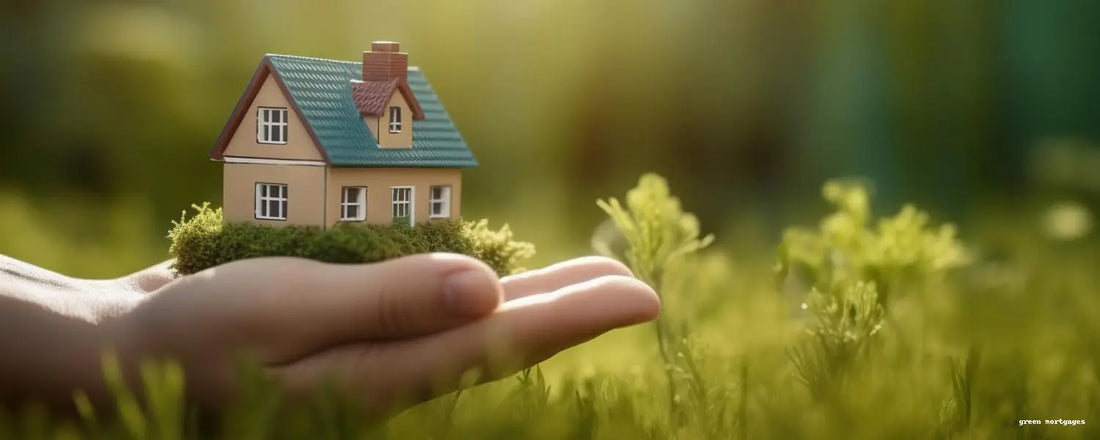The urgency of addressing climate change has placed sustainability at the forefront of global policies and financial initiatives. One such initiative is Green Mortgages, which incentivize the purchase or renovation of energy efficient properties by offering preferential loan terms. As governments and financial institutions seek ways to reduce carbon footprints and promote sustainable development, green mortgages have emerged as a vital instrument in the real estate and finance sectors.
This article explores the mechanics of green mortgages, their benefits, global adoption trends, and their potential to drive meaningful climate action.
What Are Green Mortgages?
A Green Mortgage is a home loan that provides financial incentives such as lower interest rates or higher borrowing limits for properties that meet specific energy efficiency standards. These mortgages encourage homeowners and investors to prioritize sustainability in real estate transactions.
How Green Mortgages Work
Green mortgages function by linking financial benefits to the energy performance of a building. Lenders assess a property’s sustainability rating, often based on certifications such as:
- LEED (Leadership in Energy and Environmental Design)
- BREEAM (Building Research Establishment Environmental Assessment Method)
- Energy Star Certification
Borrowers purchasing or upgrading homes to meet these standards may qualify for reduced interest rates, extended repayment terms, or larger loan amounts.

The Benefits of Green Mortgages
For Homeowners and Investors
- Cost Savings: Energy efficient properties reduce utility bills through lower energy and water consumption.
- Higher Property Value: Sustainable homes often command higher resale prices.
- Attractive Financing Options: Lower borrowing costs increase affordability for buyers.
For Financial Institutions
- Lower Default Risk: Studies indicate that energy efficient properties have lower default rates, making green mortgages a safer investment.
- Regulatory Compliance: As ESG (Environmental, Social, and Governance) requirements tighten, green financing aligns with sustainability mandates.
For Governments and Society
- Carbon Emission Reduction: Buildings account for nearly 40% of global energy related CO₂ emissions. Encouraging green buildings significantly lowers emissions.
- Energy Security: Reduced energy demand alleviates pressure on national grids and enhances energy resilience.
- Climate Policy Alignment: Green mortgages support international climate commitments, such as the Paris Agreement.
Global Adoption of Green Mortgages
Canada and North America
In Canada, institutions like the Canada Mortgage and Housing Corporation (CMHC) have introduced initiatives to promote energy efficient housing. Programs such as CMHC Green Home provide up to 25% mortgage loan insurance refunds for properties meeting energy efficiency criteria.
Europe and the EeMAP Initiative
The Energy Efficient Mortgages Action Plan (EeMAP) is a European initiative led by the European Mortgage Federation (EMF). It standardizes green mortgage frameworks across EU member states, encouraging financial institutions to support energy efficient housing.
Asia and Emerging Markets
Countries like Japan and China have integrated sustainability into housing policies through incentives such as zero energy home loans and green building subsidies.
Eligibility and Requirements for Green Mortgages

Energy Performance Standards
Properties must meet predefined sustainability ratings to qualify. Assessments consider:
- Insulation and thermal efficiency
- Renewable energy integration (solar panels, heat pumps)
- Smart home technologies reducing energy consumption
Application Process
- Energy Assessment: A certified professional evaluates the home’s efficiency.
- Mortgage Application: The borrower applies with a lender offering green mortgage programs.
- Verification and Approval: The lender confirms compliance with green building criteria.
- Loan Disbursement and Implementation: Funds are released to finance the purchase or renovation.
Challenges and the Future of Green Mortgages
Barriers to Adoption
- Lack of Awareness: Many consumers remain unaware of green mortgage benefits.
- Initial Costs: Energy efficient upgrades require upfront investment.
- Regulatory Inconsistencies: Green mortgage frameworks vary across regions, limiting scalability.
Solutions and Future Trends
- Government Incentives: Tax benefits and rebates can offset initial costs.
- Standardized Rating Systems: Unified global criteria will enhance accessibility.
- Technological Integration: Smart home solutions will further optimize energy efficiency.
Conclusion
Green mortgages represent a crucial tool in the transition toward sustainable real estate. By making energy efficient homes more accessible and financially attractive, these instruments contribute to global climate action goals while offering tangible benefits to homeowners, investors, and financial institutions.
As policymakers and industry leaders continue to refine green financing mechanisms, green mortgages will play an increasingly significant role in shaping the future of real estate and environmental sustainability.




